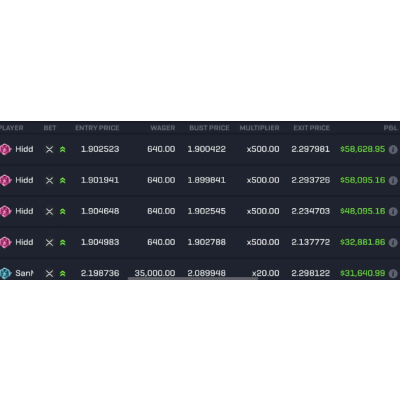

You’ve probably heard about cryptocurrency and blockchain technology, but you might not know what it is or how it works. Cryptocurrencies are digital currencies that use encryption techniques to secure transactions, verify them, and control the creation of new units. This means that although they’re virtual, they work just like physical cash — no one else can spend your money except you. Blockchain technology allows different types of information to be passed around between computers without having to go through a central server first.
Have you heard about Bots? Well what you may not know what they are or how they work. A bot is a piece of software that runs automated tasks over the internet. These tasks can include anything from sending emails to interacting with other users on social media sites like Facebook and Twitter.
Bots are useful because they allow us to do things faster than we would be able to do them manually — and sometimes their use cases go beyond simply speeding up our day-to-day lives (though this is definitely one of their main benefits). For example: if you’re building an ecommerce site and want to manage customer service inquiries on Twitter, you could use ChatGPT’s “bot builder” feature so that every time someone tweets at your company asking about a product or service question, it would automatically reply with an answer from one of your employees who has been assigned this task by management team members who have set up these rules ahead of time via our platform!
It’s an open source framework, so you can use it to build a variety of things including your own bots and customize them as you see fit. ChatGPT also comes with boilerplate code that you can use as the foundation for your bot, which will make it easier to get started than if you were starting from scratch.
The goal of ChatGPT is to make it easy for anybody interested Artificial Intelligence
Something that it can do is enhance your cryptocurrency trading to help you build your own AI-powered trading bot using simple commands that anyone can understand. You don’t need any programming experience or knowledge about machine learning algorithms; just sign up for an account and start creating bots! How Does It Work? The first step when creating a new bot with ChatGPT is deciding which cryptocurrency pair(s) will be used for trading: BTC/USD (Bitcoin vs US Dollar), ETH/USD etc… Then add two more pairs as stop loss orders: CALLED_LOSS_PAIR & PUT_LOSS_PAIR . These two pairs will automatically be used when setting up sell orders when buying at market price reaches CALLED_LOSS_PRICE & PUT_LOSS_PRICE respectively.
The GPT Protocol defines rules for exchanges, tokens, assets and swaps. The protocol enables users to create their own ERC20-compliant asset by deploying a smart contract on top of the Ethereum blockchain network. This creates liquidity between different cryptocurrencies while also allowing users to trade them directly against each other without having to go through centralized exchanges like Binance or Bittrex because they are built into our system!
Building a crypto trading bot is the first step to making money with cryptocurrencies. In this tutorial, we’ll show you how to build an AI-powered crypto trading bot with ChatGPT and get it live on the Binance exchange in less than 30 minutes.
If you’d like to skip ahead, here’s what we’ll be building:
If you’re looking for a way to automate your cryptocurrency trading, then ChatGPT is the place for you. With its powerful bot builder, building your own automated strategies has never been easier or more accessible. In this tutorial we’ll show how to build a simple strategy using our platform and some basic knowledge of Python programming language. We’ll also discuss some best practices when creating bots so they can run smoothly over long periods of time without any issues affecting performance or stability of your bot’s algorithm.* How to build a trading bot with ChatGPT
The first step in creating an automated cryptocurrency trading strategy is choosing what type of algorithm will power it: trend following or mean reversion? Bollinger bands? Support/Resistance levels? MACD indicator based entry signals? Moving averages crossover signals? All these strategies have been used successfully by professional traders but their success depends largely on market conditions at any given moment — if there aren’t enough buy signals coming through then even sophisticated algorithms won’t help much; conversely if there are too many sell signals coming through then even simple trend following systems might perform poorly because nobody wants to buy into falling markets.* How To Build A Trading Bot Using GPT Bot Builder
//@version=4
strategy("Bollinger Bands & Fibonacci Retracements Strategy", overlay=true)
// Inputs
length = input(title="BB Length", type=input.integer, defval=20)
mult = input(title="BB Mult", type=input.float, defval=2.0)
fibLevels = input(title="Fib Levels", type=input.float, defval=0.618)
// Get price data
high = highest(length)
low = lowest(length)
basis = sma(close, length)
dev = mult * stdev(close, length)
upper = basis + dev
lower = basis - dev
// Get fib retracement levels
hiDiff = high - low
fib38 = high - (hiDiff * fibLevels)
fib50 = high - (hiDiff * 0.5)
fib62 = high - (hiDiff * (1 - fibLevels))
// Plot BB and fib retracements
plot(basis, color=color.blue, title="Basis")
plot(upper, color=color.red, title="Upper")
plot(lower, color=color.green, title="Lower")
plot(fib38, color=color.orange, title="Fib 38.2%")
plot(fib50, color=color.purple, title="Fib 50.0%")
plot(fib62, color=color.yellow, title="Fib 61.8%")
// Enter long position if price crosses above lower BB and fib retracement level
if (crossunder(close, lower) and close > fib38 and not strategy.position_size)
strategy.entry("Long", strategy.long)
// Enter short position if price crosses below upper BB and fib retracement level
if (crossover(close, upper) and close < fib62 and not strategy.position_size)
strategy.entry("Short", strategy.short)
// Exit position if price crosses opposite BB and fib retracement level
if (strategy.position_size > 0 and (crossunder(close, basis) or crossunder(close, fib50)))
strategy.close("Long")
if (strategy.position_size < 0 and (crossover(close, basis) or crossover(close, fib50)))
strategy.close("Short")This code should plot Bollinger Bands and Fibonacci retracements on your chart and enter a long position when the price crosses below the lower Bollinger Band and the 38.2% Fibonacci retracement level, and enter a short position when the price crosses above the upper Bollinger Band and the 61.8% Fibonacci retracement level. It will only enter a position if there isn’t already one open, and will close the position when the price crosses the opposite Bollinger Band or the 50% Fibonacci retracement level. You can adjust the input parameters to fit your trading style.
The core components of a trading bot are the algorithm architecture, data modeling and testing/validation strategy.
The algorithm architecture describes how the bot will analyze market conditions and make decisions based on those conditions. In other words, it defines how you want your bot to behave when faced with different types of situations. For example:
In this section, we’ll walk you through the core components of a trading bot and their relationships. We’ll also cover some of the most common design patterns used in building algorithms.
A trading bot is an automated system that executes trades on behalf of an investor. This can be done in many ways, but we’ll focus on using quantitative analysis and machine learning techniques to build our own algorithm architecture model.
Trading bots work by gathering data from various sources (such as exchanges), applying various models/algorithms on top of this data to predict future movements in crypto prices, then executing trades based on those predictions so that you don’t have to!
Data modeling is the process of turning raw data into information and knowledge. It involves creating a conceptual schema for a database, which is a representation of what you want to store in it. Data modeling is essential for designing any data warehouse, and it’s the first step in building one.
The next step is loading the data into your newly-created tables so that they can be used by other programs or applications running on top of them (like machine learning algorithms).
Testing and validation strategy is essential to the success of a project. Testing can be done in many ways, but it should be done early and often. The testing process should begin before you implement your solution, and continue throughout the development cycle.
If you want to build a crypto AI trading bot, then it’s important that you know what type of team you need. A good team should consist of developers, data scientists and business people who can work together towards the same goal.
The developers will help build out your solution based on what they think is best for the product. The data scientists should be able to define the problem and define how they would like it solved by providing input into what features are needed in order to achieve success with their model or algorithm. Finally, business people should be able to provide insight into how this new technology fits within their current organization or industry as well as helping determine whether or not there is enough interest/demand for such an offering within those groups (e.g., customers).
In this tutorial, you learned how to build a cryptocurrency trading bot with ChatGPT.
You can use the same method for other cryptocurrencies as well.
The next step is to improve your bot and add more features like:
The future of crypto is bright, and it’s never been a better time to get involved. There are so many opportunities out there for people who want to start their own project or join an existing one. You can build your own trading bot with ChatGPT and make money by trading on exchanges like Binance or Coinbase Pro!